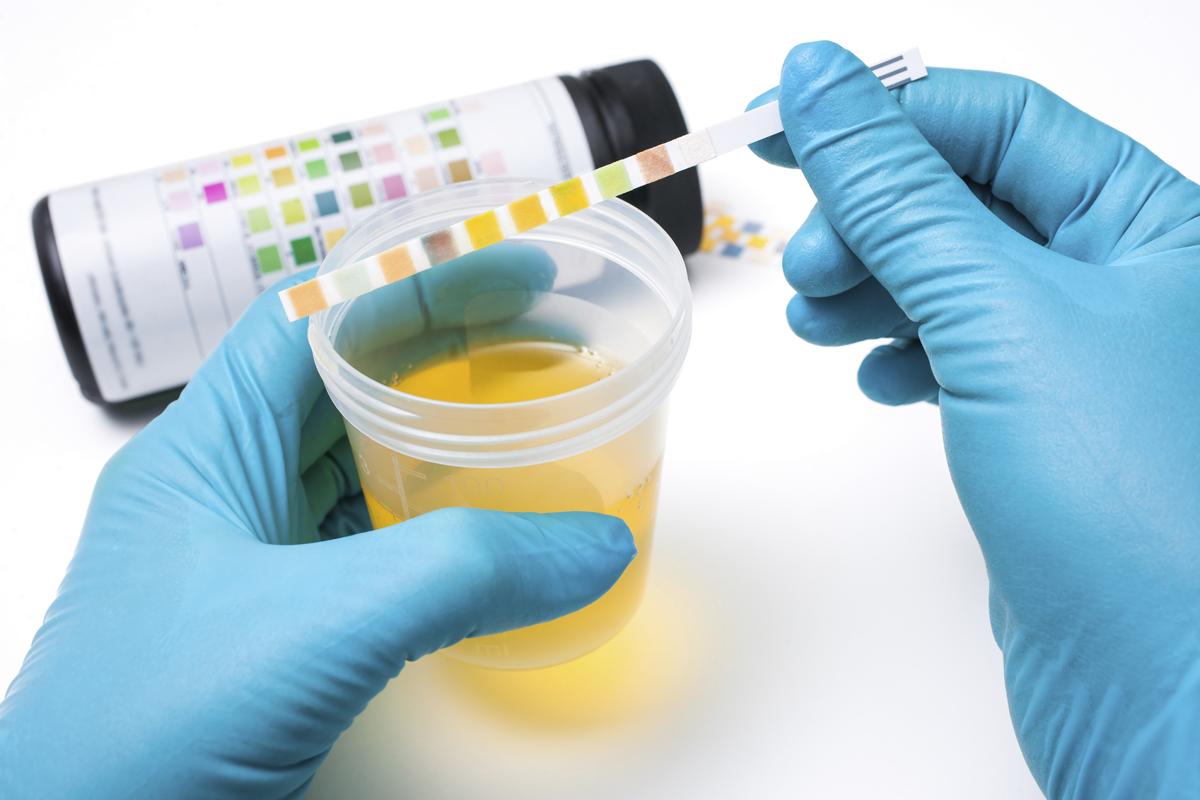
A dipstick test for urinary protein is one of the most trusted, simple, cheap and instant tests. It helps in the diagnosis of many dangerous diseases. Read the article to get detailed information about this test.
Under normal conditions our urine contains a very small amount of protein which is usually considered as zero. But a rise in the amount of protein in the urine can indicate towards many life-threatening diseases. This rise in protein content in the urine is known as proteinuria. It is very necessary to find out the protein content in urine. A dipstick test for urinary protein is considered to be one of the easiest and trusted test for urinalysis. It not only helps in finding out the levels of protein but also helps in screening many dangerous diseases. Let’s find out more information about this test in the following paragraphs.
What is Dipstick Test
The dipstick test is conducted to detect many substances like sugar, ketones, bilirubin, blood, protein, etc. It is a thin plastic strip with chemicals which change color to show the presence of such compounds. In this HealthHearty article, we are going to discuss urinary protein increase which can be detected with the help of the dipstick test. If the amount of protein is normal in the urine then it will not be reflected in the dipstick test but even a slight rise can be observed on the strip.
It helps in finding out the high levels of protein in urine but to find out the type of protein you need to conduct further tests like urine electrophoresis or urine immunofixation. The higher levels of protein may indicate towards various protein in urine causes like urinary tract infections, kidney dysfunction, pregnancy, etc.
Dipstick Test Procedure
Dipstick is a very easy test which can be performed at any time and with any random samples as it is considered to be the screening test just to check for a high level of protein. So you don’t need to do any preparation for the test if your doctor has not specifically asked you to. Following are the points covering the dipstick test procedure.
- Collect midstream sample in a sterile container.
- Now take a dipstick and immerse it inside the urine sample, and then quickly take it out of the container.
- Now let the strip dry on a clean surface.
- Hold the strip horizontally to get the reading accurately.
As we have discussed above, the results are just a basic screening of some of the dangerous diseases. Hence, secondary tests are conducted if the protein level is shown high in the dipstick test.
Significance of Dipstick Test
Dipstick test is very useful in detecting the elevated levels of protein in the urine. There are mainly two types of protein which may be present in the urine: albumin and globulin. Normal levels of these proteins is not detected in the dipstick test but even a slight rise may be seen with the help of the color change. These elevated levels indicate towards many dangerous diseases like amyloidosis, bladder cancer, high blood pressure (hypertension), kidney infection, multiple myeloma, congestive heart failure, diabetes, glomerulonephritis, heavy metal poisoning, polycystic kidney disease, systemic lupus erythematosus, Urinary Tract Infection (UTI), etc.
The elevated level of albumin indicates dehydration whereas elevated levels of globulin indicate towards chronic diseases like kidney problems, etc. Though the type of protein cannot be detected with the help of this test, it is very helpful to detect the elevated level which may further be confirmed with the help of other tests.
So these were the details about the urinalysis or dipstick test for detecting protein in urine. The test results are usually correct but consumption of contraceptive pills or specific drug intake like acetazolamide, methicillin, polymyxin B, penicillamine, etc. may interfere with the results. Hence, if your doctor asks you to undergo dipstick test, then you should tell him all your medication details prior to the test.


